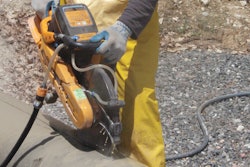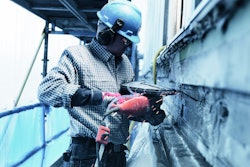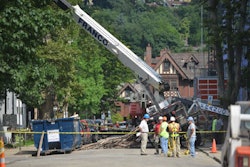A trade association representing the highway construction industry strongly supports automated enforcement of speed limits in work zones, and Maryland's experience with a similarly designed program has had very good results, the association head told a joint Pennsylvania House and Senate committee today.
According to PennDOT, 24 people were killed in work-zone crashes in 2014, eight more than in 2013. Additionally, there were 1,841 crashes in work zones last year, a slight decrease from the 1,851 crashes in 2013. Over the five-year period, there were 10,586 work-zone crashes and 128 fatalities in those crashes.
Robert Latham, executive vice president of Associated Pennsylvania Constructors, told Transportation Committee members that despite a steady decline in fatalities and serious injuries in Pennsylvania and across the country, "we can do much, much better in work zones."
"Any highway construction worker who has been on the job for just a few hours can see and feel first-hand the potential danger that exists when road construction takes place while traffic is maintained," Latham said. He explained that because the vast majority of highway work these days involves existing infrastructure, the vast majority of projects remain open to traffic.
Moreover, he noted, the number of projects has increased thanks to the passage of Act 89 of 2013. There were nearly 50% more projects in 2014 than the previous construction, and the number of projects will continue to increase.
In nearly every case, road construction requires the closing of shoulders and/or one or more lanes, and narrowing the traffic flow makes it more challenging to maneuver. Drivers have less time to react and less space to do so, and that's why PennDOT and the Turnpike Commission lower speed limits in work zones. Drivers who are distracted and vehicles that are traveling faster than the reduced speed limit present an elevated threat to the safety of construction workers, as well as themselves.
While Latham spoke mostly from the construction worker perspective, he noted this issue is about the safety of the traveling public as well. According to the Federal Highway Administration, 85% of the victims of work zone fatalities are travelers — not construction workers.
He cited Maryland's automated enforcement program as highly successful in significantly curtailing speeding in work zones. When Maryland's program began five years ago, studies showed that 7% of the vehicles were traveling through work zones at least 12 miles per hour above the posted speed limit. Today, that number has been reduced to only 1%.
The Pennsylvania legislation, Senate Bill 840, sponsored by Sen. David Argall (R-Schuylkill/Berks), drew heavily from Maryland's approach. However, Latham said one element can and should be strengthened. The bill as written specifies that automated enforcement would occur only when workers are present.
"We believe automated enforcement should be used regardless of whether workers are present, for two reasons," he said. "First, as I mentioned earlier, 85 percent of work zone fatalities involve travelers, not construction workers, and those accidents occur whether workers are present or not. Second, workers are not always immediately visible to drivers. Why make it the driver's responsibility to make the determination?"
Latham acknowledged that there are those who suggest that using cameras for automated speed limit enforcement is an intrusion into peoples' right to privacy. He said that anyone who doesn't want state government retaining photos of license plates need only to obey the speed limit in work zones. And as it relates to rights, he suggested that members of the public and construction workers have a right to travel and work safely in work zones.
Automated speed enforcement also would enable the Commonwealth to utilize its resources more efficiently, he said.
"As Maryland's experience demonstrates, automated enforcement can achieve a positive change in drivers' behavior without a significant increase in manpower," he said. "In other words, we don't have the number of State Troopers in our complement to patrol all our interstate projects, and attempting to add that number would be cost prohibitive."
He strongly disagreed with the assertion by some that automated enforcement "is simply a mechanism to reach into the public's pocket and generate revenue."
"The Maryland experience lays that to rest," Latham said. "Citations in Maryland have dropped significantly as the motoring public has adapted to automated enforcement, and as you've heard today, Maryland remains quite happy with its program. As for APC's members, we would be pleased if no citations were issued because that would mean that drivers are complying with the law and that work zones are safer."






![[VIDEO]Shake Hands With Danger: A Construction Safety Classic](https://img.forconstructionpros.com/files/base/acbm/fcp/image/2015/07/default.55a3eafd51644.png?auto=format%2Ccompress&fit=crop&h=167&q=70&w=250)












